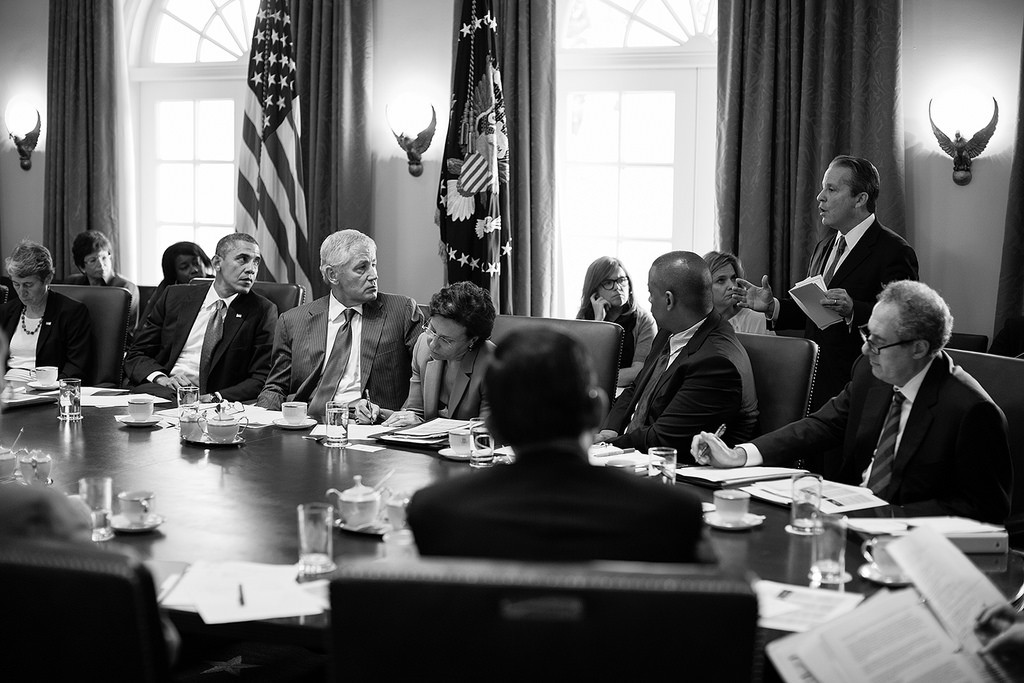Unconstrained Grand Strategy

How grand is grand strategy? Frank Hoffman, a friend and WOTR contributing editor, wrote an article titled “Grand Strategy: The Fundamental Considerations,” available behind the paywall at Orbis, the journal of the Foreign Policy Research Institute. Like all of Hoffman’s work, it is well written, sensible, and meticulously sourced. Should you have the means, I urge you to read it. Hoffman offers eight “considerations” that influence the making of grand strategy, but more to the point, U.S. grand strategy:
- Context and culture
- Constraints
- Compromise and consensus by council
- Competiveness
- Coherence
- Contingency
- Continuous assessment and adaptation
- Communication
Each consideration is thoroughly explored, and the piece is chock full of supporting quotes from the grandees of strategy. Seven of Hoffman’s considerations are spot on, coherent, and complete, yet one of his arguments—his discussion of constraints—inspired an epiphany worth sharing. He writes,
There are pundits in the United States that believe strategies should be unconstrained, reflecting that American predisposition towards engineered solutions and massive resources.
He continues, “Thinking of strategy without understanding the limits of means or resources is woefully delusionary.” Later still, he writes, “Future U.S. national security strategies will have to seek creative and relevant solutions with fewer resources.”
While his essay claims to deal with grand strategy, this passage is one of a few places where it dips clearly into military strategy, an area in which the ends-ways-means construct adds rigor and structure to thinking. Grand strategy is different, because as Hoffman acknowledges, it “requires the conceptualization of all the elements of national power.” Therefore, a true grand strategy does not ignore resource constraints so much as it seeks to define (and redefine) them. I would go so far as to say that while grand strategy may not be resource “unconstrained” it must surely be the least constrained layer of strategic thinking, in that it can and should—as a product of its own logic—re-order a nation’s economy and resources in order to achieve the desired strategic ends.
One example of this surely must be the last successful grand strategy that the United States pursued, that of containment. Think back to NSC-68, and then try and fit all that it entailed, the national effort it required—centered around defense spending but not solely a product of it—into the “available resources” the nation provided in the five years after the defeat of the Axis powers. No one associated with the shaping of containment threw up their hands and gave up because the resources to implement it were not immediately available after a long and expensive war. The grand strategy itself provided the thinking and effort required to generate the necessary resources and direct them toward an ambitious, global, and grand strategy.
However, for some reason, the masters of strategy would knowingly deprive today’s grand strategists of one of the most important elements of national power: the power of the nation to produce goods and services. All manner of noise is made about grand strategy representing the highest synthesis of all the elements of national power toward a set of defined ends, and then the grand strategist is handcuffed by having to devise a grand strategy “within the limits of means or resources,” which in practice, means “the budgetary outlay devoted to national security.” This is self-defeating, it is illogical, it is counterfactual, and it results in an impoverished set of strategic options. Keep in mind that we are limiting ourselves here to the realm of grand strategy, in its broadest terms. The making of military strategy must be guided by respect for resources, because presumably, by this time a coherent grand strategy would have suggested the proper allocation of national resources to the military instrument.
I have come to the conclusion that in the realm of grand strategy, the strategist who enters the argument with a pre-conceived notion of what general portion of the GDP will be allocated to achieving desired ends is guilty either of delusional thinking or practicing something other than the making of grand strategy. More to the point, it is the job of the grand strategist to assess the total resources available to achieving the desired ends and suggest alternative proportions that re-allocate resources away from less critical uses to more critical uses. In other words, anyone making grand strategy who accepts current “…limits of means or resources…” has skipped the most important first step, which is to define or re-define those limits.
Perhaps my view of the matter raises the realm of grand strategy to a level above even that which Hoffman and others would grant it. If so, we must either accept my view and sweep away all this nonsense about limits and resources, or we should stick to the resource constrained view, redefine what grand strategy actually is, and sweep away all this nonsense about it being that grand and involving “all the instruments of national power.” Only one of the two approaches is logical and coherent.
Bryan McGrath is the Assistant Director of the Hudson Center for American Seapower and the Managing Director of The FerryBridge Group LLC.

